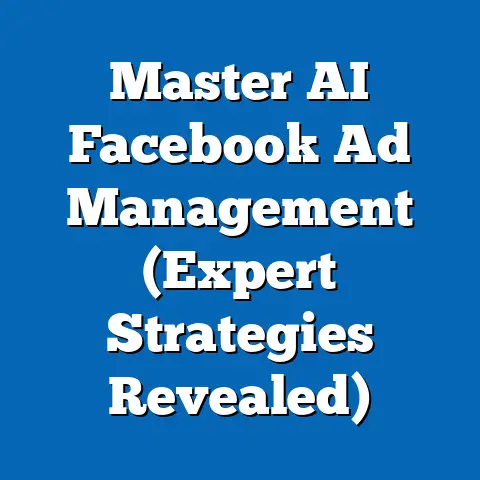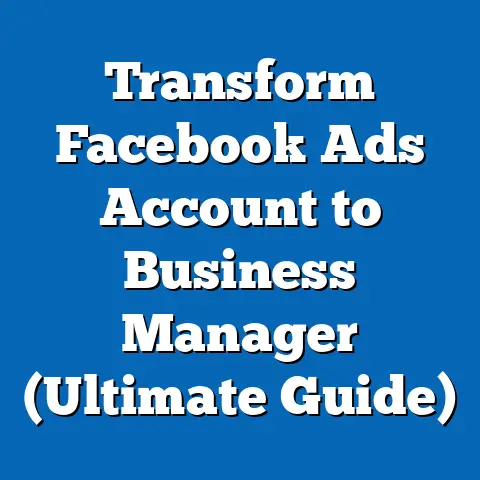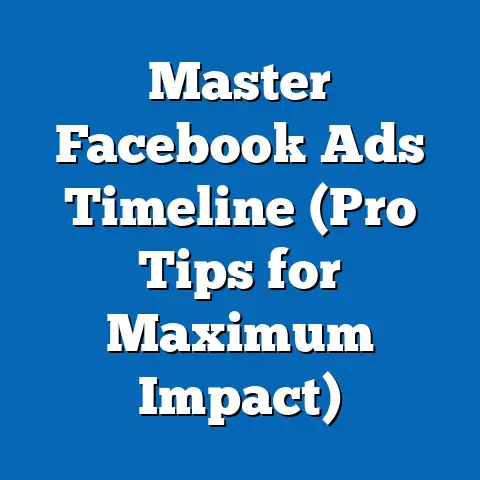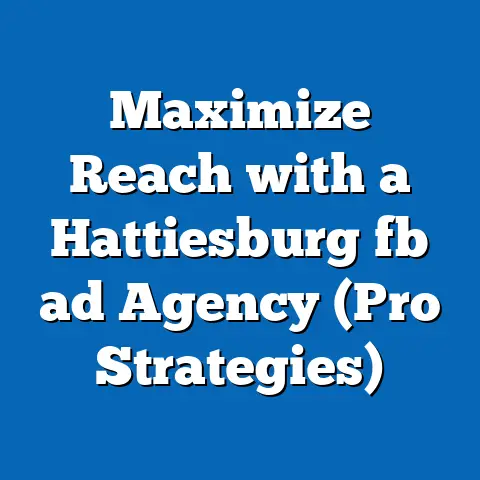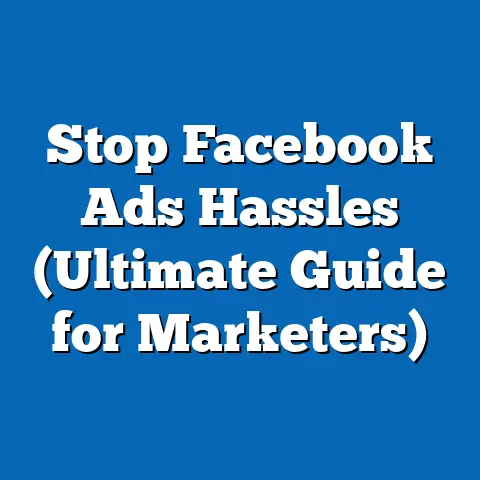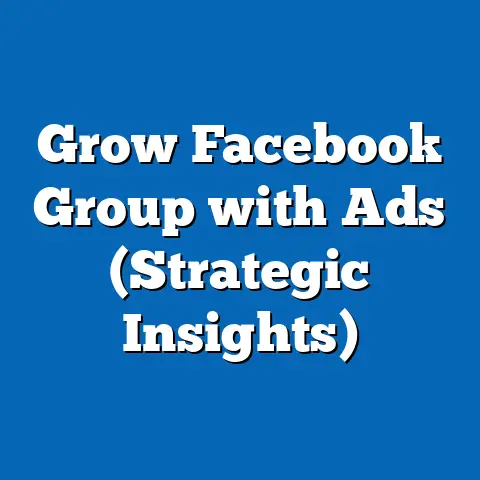Master Facebook Ads for Shopify Store (Proven Strategies)
As a digital marketing specialist with years of experience helping businesses thrive online, I’ve seen firsthand how powerful Facebook Ads can be for eCommerce, especially for Shopify store owners. The key is understanding how to leverage this platform effectively without getting bogged down in overly complex strategies. Think of it as unlocking a treasure chest – the treasure being increased sales and brand awareness – without needing a PhD in advertising to do so.
In this guide, I’m going to walk you through proven strategies that you can implement today to boost your Shopify store’s visibility and drive conversions using Facebook Ads. We’ll focus on low-maintenance advertising options that can yield significant results, even if you’re juggling multiple hats as a store owner. Get ready to learn how to make Facebook Ads work for you, not the other way around.
Understanding Facebook Ads
Facebook Ads are essentially targeted advertisements displayed to users on Facebook, Instagram, Messenger, and other platforms within the Meta network. They allow businesses to reach specific audiences based on demographics, interests, behaviors, and more. For Shopify stores, this means you can connect with potential customers who are most likely to be interested in your products.
The advantages of using Facebook Ads for your Shopify store are numerous:
- Targeted Reach: Facebook’s extensive data allows you to pinpoint your ideal customer with incredible precision.
- Diverse Ad Formats: From image ads to video ads to carousel ads, there’s a format to suit every product and marketing message.
- Powerful Analytics: Facebook Ads Manager provides detailed insights into your ad performance, allowing you to optimize your campaigns for maximum ROI.
According to Statista, Facebook remains the leading social media platform for advertising, with a global audience reach that’s hard to ignore. A recent case study I encountered involved a small Shopify store selling handmade jewelry. By implementing a well-targeted Facebook Ads campaign, they saw a 300% increase in sales within just three months. This kind of success isn’t just luck; it’s the result of strategic planning and execution.
Takeaway: Facebook Ads offer unparalleled targeting capabilities and a variety of ad formats to reach potential customers for your Shopify store.
Setting Up Your Shopify Store for Success
Before diving into Facebook Ads, it’s crucial to ensure your Shopify store is primed for success. Think of it as preparing the stage before the actors arrive. A poorly designed or confusing store can negate even the most brilliant ad campaign.
Here are some key elements to focus on:
- Compelling Product Descriptions: Go beyond basic descriptions. Tell a story, highlight the benefits, and address potential customer questions.
- High-Quality Images: Invest in professional-looking product photos that showcase your products in the best possible light. Use multiple angles and lifestyle shots to give customers a complete picture.
- User-Friendly Navigation: Make it easy for customers to find what they’re looking for. Use clear categories, search functionality, and filters.
- Mobile Optimization: Ensure your store looks and functions flawlessly on mobile devices, as a significant portion of online shopping happens on smartphones.
But the most important piece of the puzzle is integrating the Facebook Pixel. The Facebook Pixel is a small snippet of code that you place on your website. It tracks user behavior, such as page views, add-to-carts, and purchases. This data is invaluable for optimizing your Facebook Ads campaigns.
Here’s how to integrate the Facebook Pixel into your Shopify store:
- Go to Facebook Ads Manager: Navigate to the “Pixels” section.
- Create a Pixel: If you don’t already have one, create a new pixel.
- Install the Code: Choose the option to manually install the code.
- Copy and Paste: Copy the pixel code.
- Shopify Integration: In your Shopify admin, go to “Online Store” > “Preferences.” Paste the pixel code into the “Facebook Pixel” field.
I remember working with a client whose Shopify store had a high bounce rate. After analyzing their website, we discovered that the product descriptions were generic and the images were low-resolution. By revamping their product pages and integrating the Facebook Pixel, we saw a significant improvement in engagement and conversion rates.
Takeaway: Optimize your Shopify store with compelling content, high-quality visuals, and user-friendly navigation. Don’t forget to integrate the Facebook Pixel for accurate tracking.
Target Audience Identification
This is where the magic truly happens. You can have the most beautiful ad in the world, but if you’re showing it to the wrong people, it’s like shouting into the void. Defining your target audience is crucial for Facebook Ads success.
Here are some methods for audience research:
- Facebook Audience Insights: This tool provides valuable data about your potential customers, including their demographics, interests, behaviors, and more.
- Competitor Analysis: Analyze your competitors’ Facebook pages to see who’s engaging with their content. This can give you insights into potential customer segments.
- Customer Surveys: Ask your existing customers about their preferences, buying habits, and pain points.
- Website Analytics: Use Google Analytics to understand who’s visiting your website, where they’re coming from, and what they’re doing.
Once you’ve gathered this data, create buyer personas. A buyer persona is a semi-fictional representation of your ideal customer. It should include details such as their age, gender, occupation, interests, goals, and challenges.
Here’s an example of a buyer persona for a Shopify store selling eco-friendly baby products:
- Name: Sarah
- Age: 32
- Occupation: Stay-at-home mom
- Interests: Organic food, sustainable living, parenting blogs
- Goals: To provide the best possible care for her baby
- Challenges: Finding safe and eco-friendly products that are also affordable
By understanding your target audience in detail, you can create Facebook Ads that resonate with them and drive conversions.
Takeaway: Conduct thorough audience research and create buyer personas to understand the needs and preferences of your potential customers.
Crafting Compelling Ad Content
Now that you know who you’re targeting, it’s time to create ad content that grabs their attention and compels them to take action. This involves crafting effective ad copy and visuals.
Here are some tips for writing captivating headlines:
- Use strong verbs: “Discover,” “Transform,” “Unlock”
- Highlight benefits: “Get a Flawless Complexion,” “Save Time and Money”
- Create a sense of urgency: “Limited Time Offer,” “Sale Ends Soon”
Here are some tips for writing engaging descriptions:
- Tell a story: Connect with your audience on an emotional level.
- Highlight key features: Focus on what makes your product unique.
- Address pain points: Show how your product solves a problem.
Here are some tips for creating effective calls to action (CTAs):
- Use clear and concise language: “Shop Now,” “Learn More,” “Get Started”
- Create a sense of urgency: “Claim Your Discount,” “Sign Up Today”
- Make it visually appealing: Use a button that stands out from the rest of the ad.
A/B testing is crucial for determining what ad creatives resonate best with your audience. Create multiple versions of your ad with different headlines, descriptions, and visuals. Then, run them simultaneously and track their performance. The version that performs best is the one you should continue using.
I once helped a Shopify store improve their ad performance by simply changing the headline of their ad. The original headline was generic and didn’t highlight any specific benefits. By changing it to a headline that focused on the key benefit of their product, we saw a 50% increase in click-through rate.
Takeaway: Craft compelling ad copy and visuals that resonate with your target audience. Use A/B testing to optimize your ad creatives for maximum impact.
Utilizing Different Ad Formats
Facebook offers a variety of ad formats to choose from, each with its own strengths and weaknesses. Understanding these formats and how to leverage them is essential for maximizing your ROI.
Here are some of the most popular ad formats for Shopify stores:
- Image Ads: Simple and effective for showcasing a single product.
- Video Ads: Engaging and informative for demonstrating product features or telling a brand story.
- Carousel Ads: Allow you to showcase multiple products in a single ad.
- Collection Ads: Designed for mobile shopping, these ads feature a hero image or video above a collection of products.
Here are some examples of when to use each ad format:
- Image Ads: Use image ads to promote a single product or highlight a specific offer.
- Video Ads: Use video ads to demonstrate how your product works or to tell a compelling brand story.
- Carousel Ads: Use carousel ads to showcase a range of products or to tell a story across multiple images.
- Collection Ads: Use collection ads to create a seamless mobile shopping experience.
Best practices for each ad format vary. For example, video ads should be short, engaging, and optimized for mobile viewing. Carousel ads should feature high-quality images and compelling headlines. Collection ads should be designed to encourage users to browse and purchase products.
Takeaway: Experiment with different ad formats to find the ones that work best for your products and target audience. Follow best practices for each format to maximize engagement and conversions.
Budgeting and Bidding Strategies
Setting a budget for your Facebook Ads is a critical step. The key is to find a balance between spending enough to reach your target audience and not overspending.
Here’s how to approach budgeting:
- Start Small: Begin with a modest budget and gradually increase it as you see positive results.
- Consider Your Goals: Determine how much you’re willing to spend to achieve your desired ROI.
- Factor in Your Margins: Ensure your ad spend doesn’t eat into your profits.
Facebook offers different bidding strategies, including:
- Cost-Per-Click (CPC): You pay each time someone clicks on your ad.
- Cost-Per-Impression (CPM): You pay for every 1,000 impressions your ad receives.
- Cost-Per-Acquisition (CPA): You pay only when someone takes a specific action, such as making a purchase.
Choosing the right bidding strategy depends on your goals and budget. CPC is a good option if you’re focused on driving traffic to your website. CPM is a good option if you’re focused on brand awareness. CPA is a good option if you’re focused on driving conversions.
Monitoring your ad spend is crucial. Keep a close eye on your budget and adjust it based on your performance metrics. If you’re seeing positive results, you can increase your budget to reach a wider audience. If you’re not seeing the results you want, you can decrease your budget or try a different bidding strategy.
Takeaway: Set a budget that aligns with your goals and available resources. Experiment with different bidding strategies to find the one that works best for you. Monitor your ad spend and adjust it based on performance metrics.
Tracking and Analyzing Ad Performance
Tracking ad performance is essential for understanding your ROI and making data-driven decisions. Facebook Ads Manager provides a wealth of data about your campaigns, including:
- Click-Through Rate (CTR): The percentage of people who click on your ad after seeing it.
- Conversion Rate: The percentage of people who take a desired action, such as making a purchase, after clicking on your ad.
- Cost Per Acquisition (CPA): The cost of acquiring a new customer through your Facebook Ads campaign.
- Return on Ad Spend (ROAS): The amount of revenue you generate for every dollar you spend on Facebook Ads.
Google Analytics can also provide valuable insights into your ad performance. By linking your Google Analytics account to your Shopify store, you can track user behavior after they click on your ad. This can help you understand how your ads are driving traffic to your website and how that traffic is converting into sales.
Analyzing this data allows you to identify what’s working and what’s not. If you’re seeing a low CTR, it may be a sign that your ad copy or visuals aren’t compelling enough. If you’re seeing a low conversion rate, it may be a sign that your website isn’t optimized for conversions.
By continuously tracking and analyzing your ad performance, you can make data-driven decisions that improve your ROI and drive sales.
Takeaway: Track your ad performance using Facebook Ads Manager and Google Analytics. Analyze key metrics to understand what’s working and what’s not. Make data-driven decisions to improve your ROI.
Conclusion
Mastering Facebook Ads for your Shopify store is an ongoing process that requires continuous learning and adaptation. By implementing the proven strategies outlined in this guide, you can enhance your advertising efforts and drive sales. Remember to focus on understanding your target audience, crafting compelling ad content, utilizing different ad formats, setting a budget, and tracking your ad performance.
Don’t be afraid to experiment and try new things. The key is to stay informed, stay flexible, and stay focused on your goals. With a little effort and dedication, you can unlock the power of Facebook Ads and take your Shopify store to the next level. Now go out there and start advertising!

